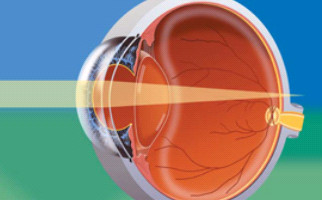Hyperopia
What exactly is hyperopia (farsightedness)?
Hyperopia (farsightedness) is a refractive error of the eye, in which incoming light rays (relections) do not focus on the retina layer, as occurs in normal emmetropic eyes, but on a point behind it.
Hyperopia symptoms:
Symptoms of hyperopia vary with age. In a hyperopic eye, while distant objects are clearly seen, those nearer perceived as blur and in fact they are out of focus.
Hyperopia causes:
Hyperopia (farsightedness) is possible to occur due to reduced refractive power of the eye, when the corneal layer is less convex than normal (refractive hyperopia), where the cornea is less convex than normal (refractive hyperopia), decreased sagittal axis of the eye (axial hyperopia > 6 diopters), or a combination of them. Due to infants’ small eye size, hyperopia occurs in the first years of life. Then, in children, there is no vision deterioration because of the powerful adaptation mechanism, unless there are several hyperopia diopters (e.g. strabismus predisposition, anisometropia). In such cases, a full ophthalmological examination is necessary, so as to avoid unpleasant conditions, like amblyopia (‘lazy eye’). In young adults, hyperopia affects near vision while in people over 35, distant vision is also influenced with a number of symptoms, such as dizziness, fatigue and lacrimation (e.g. while reading). It is worth mentioning that presbyopia occurs earlier in hyperopic patients.
Hyperopia treatment and correction:
- Eye spectacles with positive or converging lenses
- Contact lenses
- Laser refractive procedure (excimer laser)
- Surgical procedure for the replacement of eye’s natural, crystalline lens















